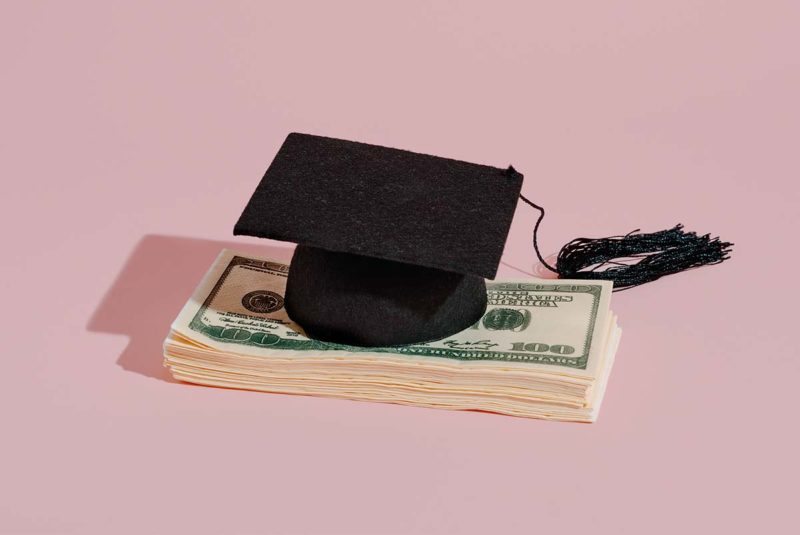Whether you’re an undergrad or grad student or pursuing a certification or license, you know higher education is expensive. Enter student loans. Think of them as superheroes that swoop in and save the day by helping you pay for your education.
There are two primary categories of student loans: federal student loans (think: Team Captain America) and private student loans (think: Team Iron Man). Each team is made up of different loans that will help you pay for school.
Because there are so many different types of student loans out there, we went ahead and put together a guide for you. Read on to learn more about each type of student loan and which ones you may qualify for.
The Short Version
- There are two primary categories of student loans: federal and private. Each category is an umbrella term with many subtypes underneath it
- The most common student loans are Stafford loans. They are available as direct subsidized loans and direct unsubsidized loans
- Private loans resemble personal loans. Your eligibility and interest rates mostly depend on your credit score. But there are options for students with low or no credit scores
Types of Federal Student Loans
First up is Team Captain America, aka the Federal Direct student loan programs. There are four of them, and each one has its requirements. Which ones you qualify for will depend a lot on your financial situation and your academic year.
Federal Direct loans, also known as Stafford loans, are offered by the federal government and are the most common type of student loan. They typically have lower interest rates than other loan options and have additional protections. Congress sets the interest rates for these loans every year.
To apply for a Federal Direct loan, you must fill out the Free Application for Federal Student Aid (FAFSA®). The FAFSA® helps the Department of Education determine your eligibility for federal student aid. (Some Federal Direct loans have additional forms to fill out.)
Federal student loans have two unique perks:
- They have fixed interest rates.
- You start paying the loan off after graduation.
Let’s explore the different types of federal student loans and see what’s right for you:
Direct subsidized loans
Direct subsidized loans help cover the cost of college for undergraduate students who demonstrate financial need.
The Department of Education pays the loan’s interest while the borrower is enrolled at least half-time, 6 months after the borrower leaves school and during any deferment periods.
- Borrower type: Undergraduate students
- 2022 – 2023 interest rate: 4.99%[1]
- Maximum loan amount: The loan amount ranges from $3,500 – $5,500 a year depending on your academic year and whether you filed as a dependent on your taxes.[2]
- How to apply: FAFSA®
- Considerations: Loan repayments and interest accrual are deferred until December 31, 2022, under the CARES Act.[3]
Direct unsubsidized loans
Direct unsubsidized loans apply to undergraduate and graduate students. Unlike subsidized loans, eligibility isn’t need-based, and borrowers must pay off interest over the life of their loan(s).
- Borrower type: Undergraduate and graduate students
- 2022 – 2023 fixed interest rate: 6.54%[1]
- Maximum loan amount: The loan amount ranges from $5,500 – $12,500 a year, depending on your academic year and whether you filed as a dependent on your taxes.[2]
- How to apply: FAFSA®
- Considerations: Loan payments and interest accrual are deferred until December 31, 2022, under the CARES Act.[3]
PLUS loans
There are two types of Parent Loan for Undergraduate Students (PLUS) loans: the Parent PLUS loan and the Graduate PLUS loan. Parent PLUS loans are for parents of dependent undergraduate students. Grad PLUS loans are for graduate or professional students.
- Borrower type: Parents of dependent undergraduate students and graduate or professional students
- 2022 – 2023 interest rate: 7.54%[1]
- Maximum loan amount: The cost of attendance minus other financial aid[4]
- How to apply: Direct PLUS loan application
- Considerations: Loan payments and interest accrual are deferred until December 31, 2022, under the CARES Act.[3]
Types of Private Student Loans
If federal student loan programs don’t adequately cover your expenses, you can always turn to a private lender. Enter Team Iron Man: the heroes of the private sector.
Private student loans resemble personal loans. Your eligibility and offered interest rate mostly depend on your credit history – but there are options for students with low or no credit history.
Private loans are unsubsidized. Payments are rarely deferred, and not all lenders offer grace periods. To apply for private loans, you must work directly with a lender.
Let’s explore the requirements for eight private loans. We’ll start with loans that are available to any student, then we’ll check out specialty loans.
Institutional loans
Many colleges and universities offer loans to their students. The amount you’re offered and what you’re offered will vary by institution, so you’ll need to check with your school’s financial aid office. Be sure to read the loan’s fine print and make sure you understand the loan’s repayment terms. You may want to ask about work-study programs, scholarships and other ways to stay ahead of your student loan debt.
- Borrower type: Students enrolled in the institution
- Providers: The institution
- Interest rate: Ranges from 0% – 9%
- Maximum loan amount: Varies by institution
- Repayment: Often lacks repayment flexibility and generous grace periods
Credit union loans
Rather than get a student loan from a big-name bank, consider credit unions or other community banks. Credit unions often have better loan terms for members, and because they’re local, you can meet with a representative one-on-one to talk about a loan.
- Borrower type: Enrolled students
- Providers: Any credit union or community bank
- Interest rate: Varies by credit score and lender (typically more favorable than other private student loan options)
- Maximum loan amount: Varies by lender
- Repayment: Credit unions and community banks often have flexible repayment options and generous grace periods compared to other financial institutions.
For non-U.S. citizens: International student loans
Some private lenders will lend to international students.
- Borrower type: International students
- Providers: Some private lenders
- Interest rate: Varies by co-signer’s credit score and lender
- Maximum loan amount: Varies by lender
- Considerations: Unless the student is an eligible noncitizen, most lenders will require a U.S. citizen to co-sign the loan
State student loans
Some states offer financial assistance to help reduce higher education costs. State loans function more like personal loans than federal loans. They often have low interest rates, and a few are forgivable if a graduate enters a qualifying field of work.
- Borrower type: Students who are state residents
- Providers: The state
- Interest rate: Varies by state
- Maximum loan amount: Varies by state
- Repayment: Repayment varies by state but typically offers flexible repayment options and generous grace periods.
Student loans for bad credit or no credit
Some private lenders offer student loans to students with low or no credit. These loans typically have higher interest rates, and eligibility is based on future earning potential.
- Borrower type: Students with low or no credit
- Providers: Some online lenders offer loans without a credit check.
- Interest rate: Typically higher than other student loan options
- Maximum loan amount: Varies by lender
- Considerations: Because these loans typically have higher interest rates, it’s best to refinance your loan(s) as soon as you’ve improved your creditworthiness and built a stronger credit history.
For law students: Bar exam loans
A bar exam loan is a specialty loan that helps law students cover their living expenses while they study for the bar. This loan type is a little different from a traditional student loan. The money gives law students time to study rather than cover traditional school-related expenses.
- Borrower type: Law students studying for the bar
- Providers: Some online lenders provide bar exam loans
- Interest rate: Varies by credit score and lender
- Maximum loan amount: Varies by credit score and lender
- Considerations: These loans don’t have the flexible repayment options that federal student loans have. And the loan may require you to take the bar exam 6 – 12 months after taking out the loan.
For tech whizzes: Boot camp loans
Coding boot camp can be an incredible educational experience, but it’s not covered by traditional student loans. If you need financial assistance, consider a boot camp loan. These loans pay the camp’s costs as well as living expenses.
- Borrower type: Students attending coding boot camp
- Providers: Some online lenders provide boot camp loans.
- Interest rate: Varies by credit score and lender
- Maximum loan amount: Varies by coding program and lender
- Repayment: Boot camp loans often have generous grace periods and multiple repayment options.
For health profession students: Medical school loans
Many private lenders offer loans designed specifically with medical school in mind. These loans come with extended grace periods or deferment during residency.
- Borrower type: Medical students
- Providers: Some private lenders
- Interest rate: Varies by credit score and lender
- Maximum loan amount: Varies by lender
- Repayment: There are typically flexible repayment plans and generous grace periods or repayment deferrals during residency
Which Loan Heroes Are Your Type?
There are lots of options when it comes to paying for your education. And the best part? There’s no need to pick between Team Captain America (aka federal student loans) and Team Iron Man (aka private student loans). You can use federal and private student loans to finance your pursuits in higher education. It all depends on what you qualify for.




